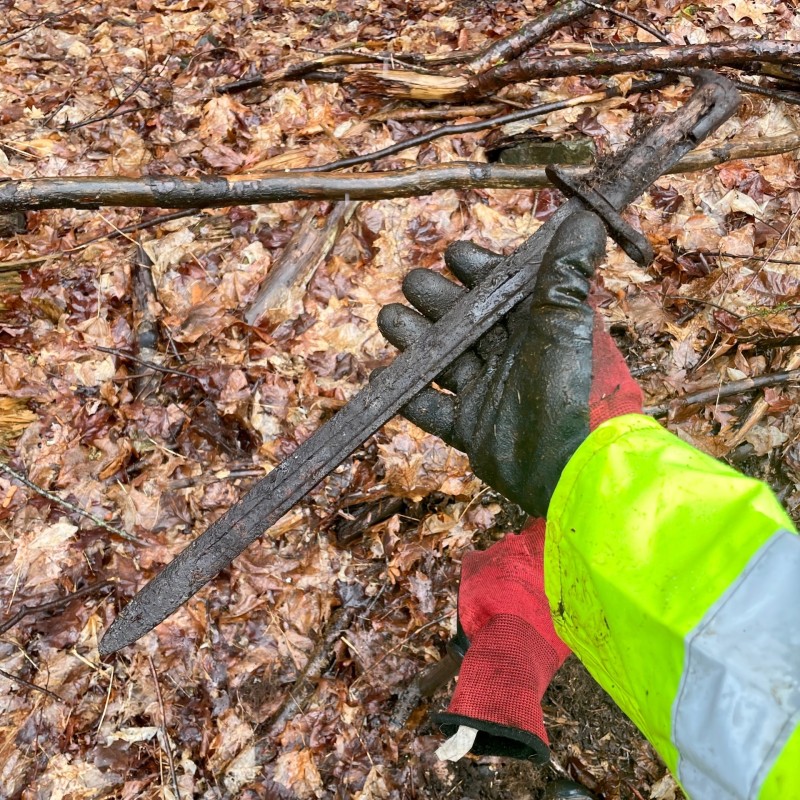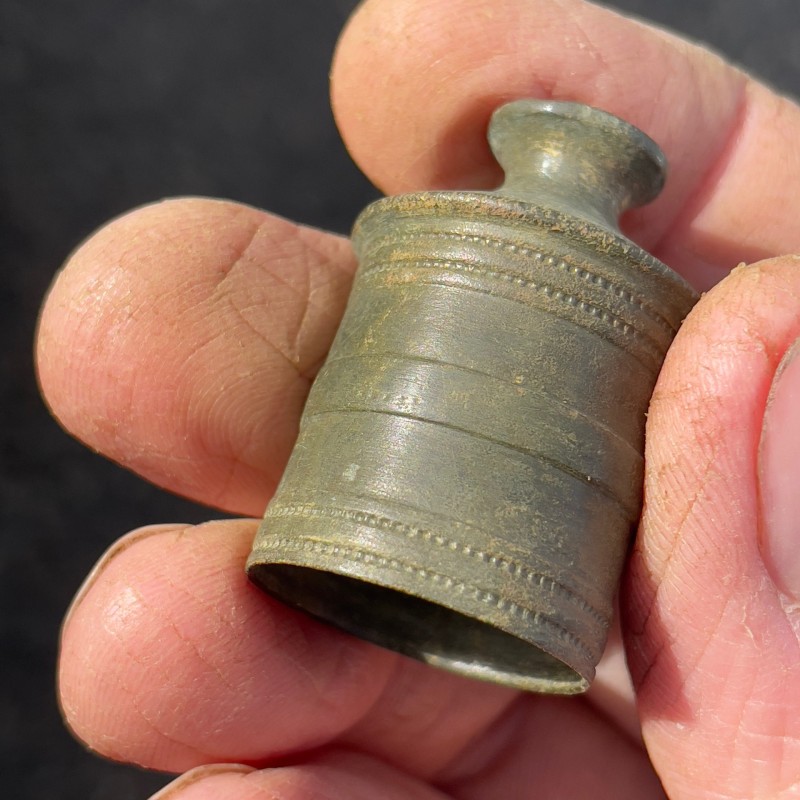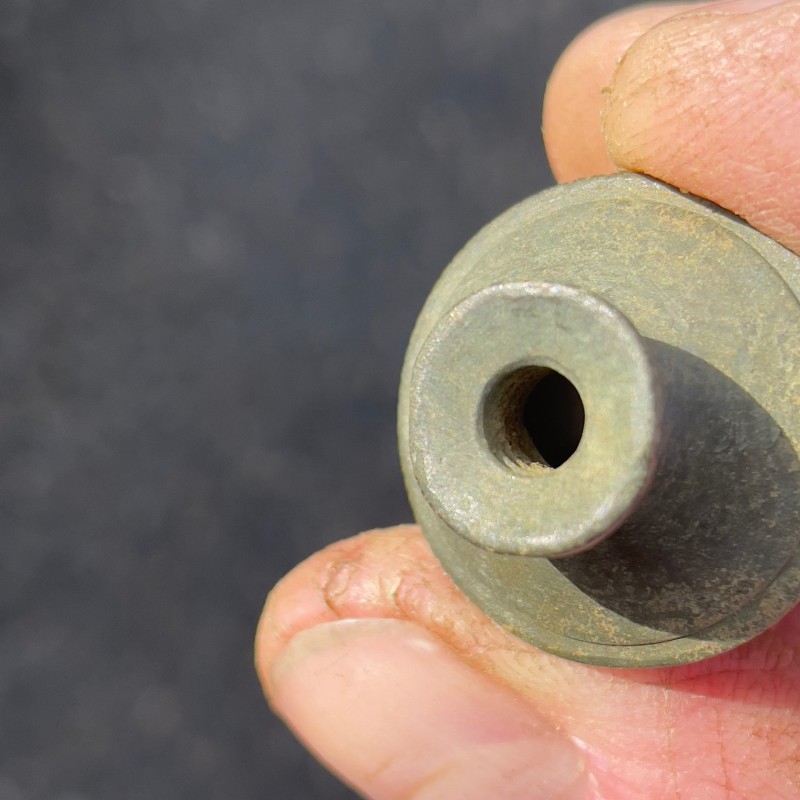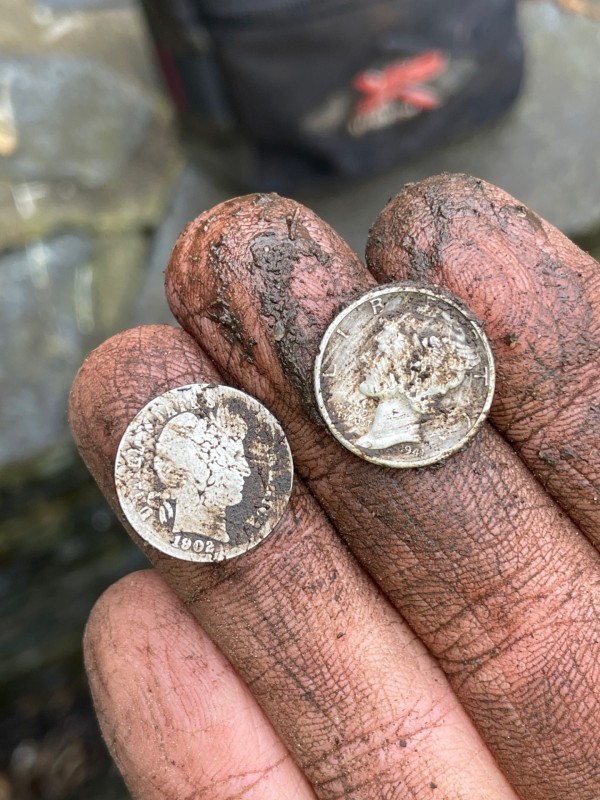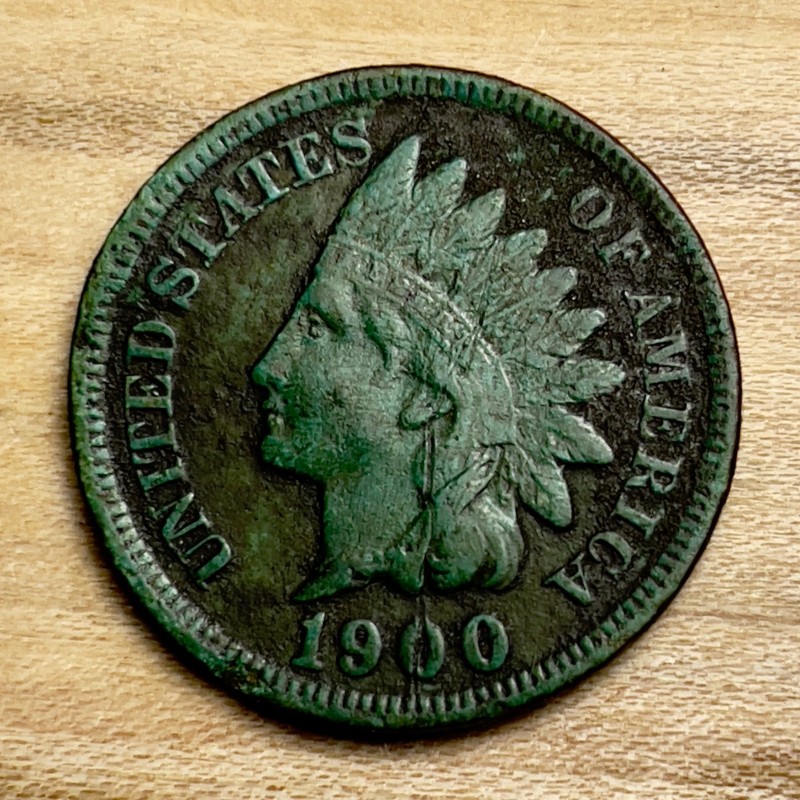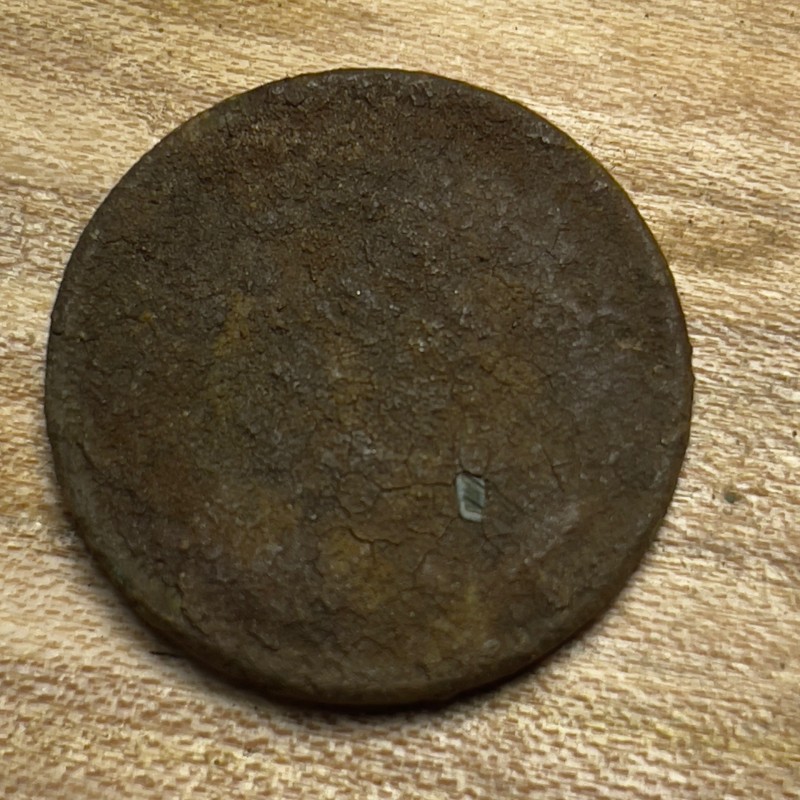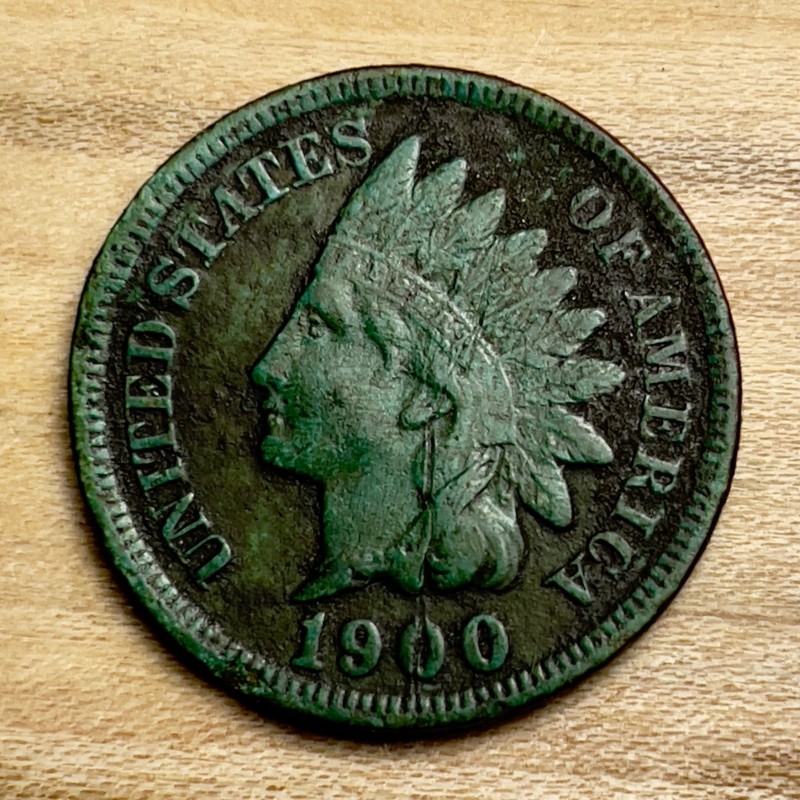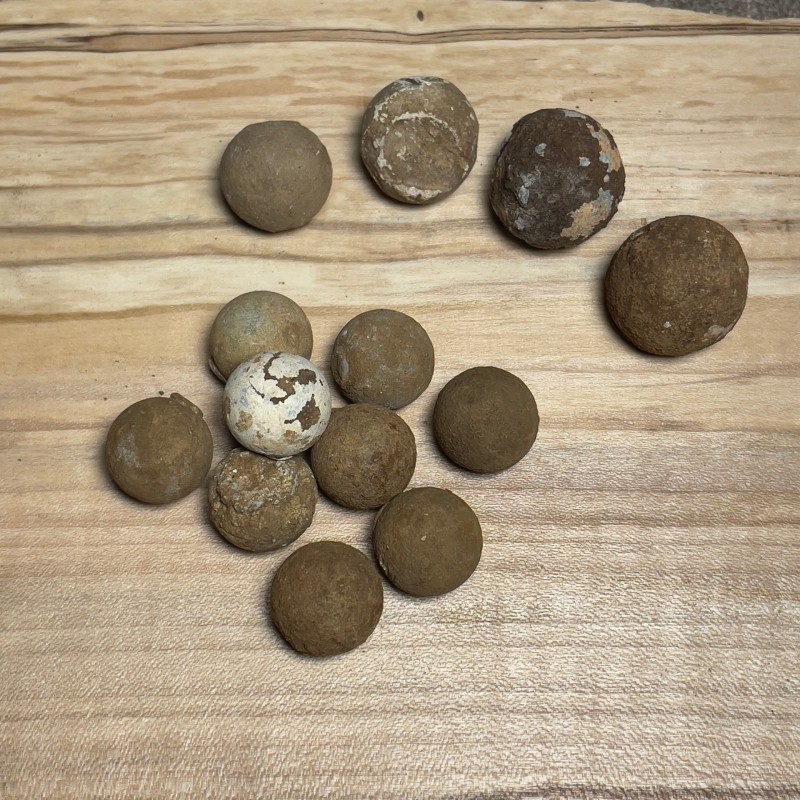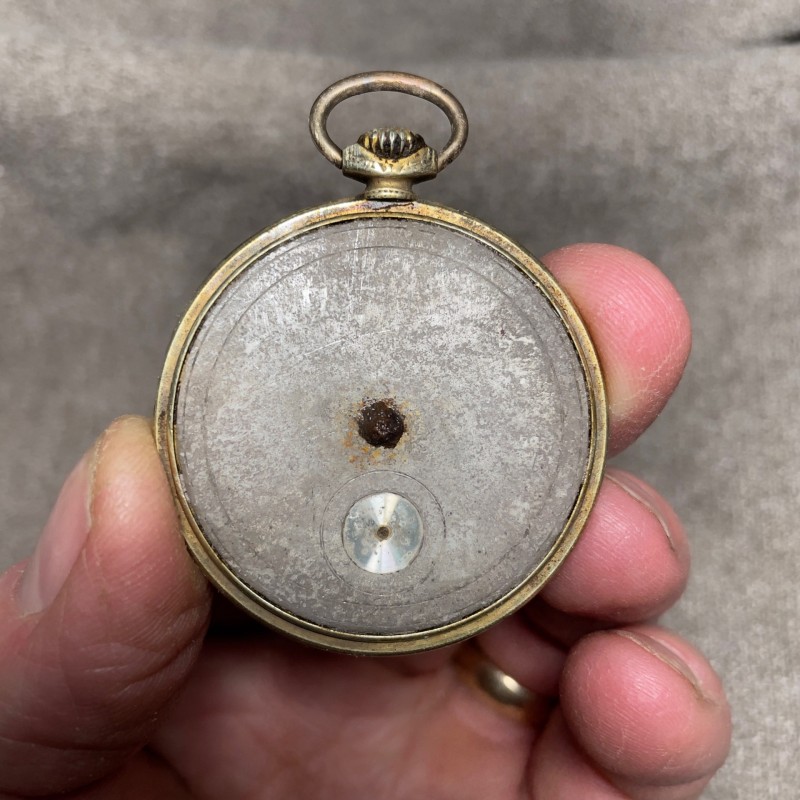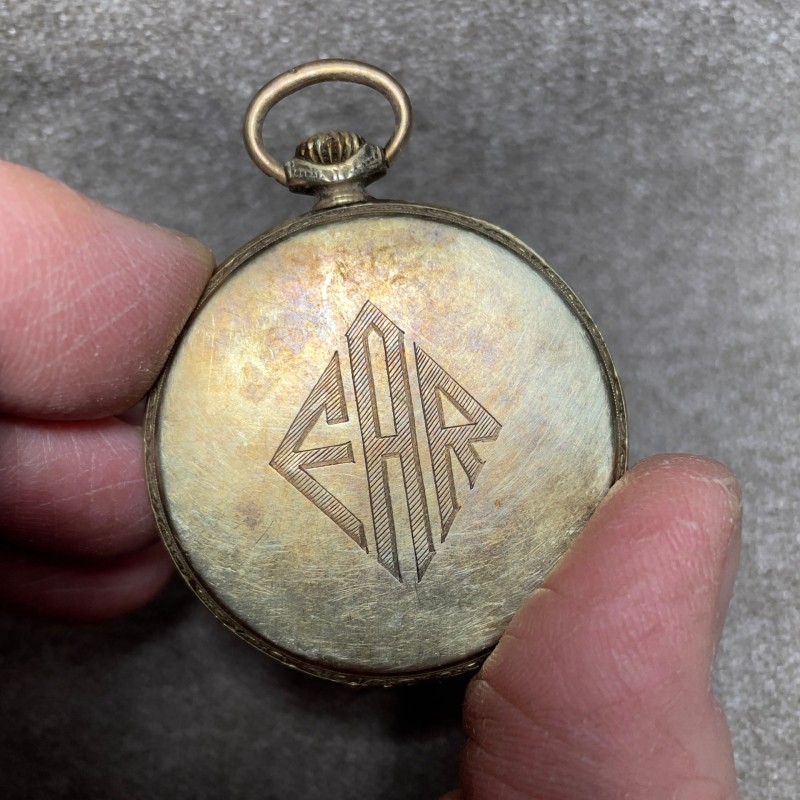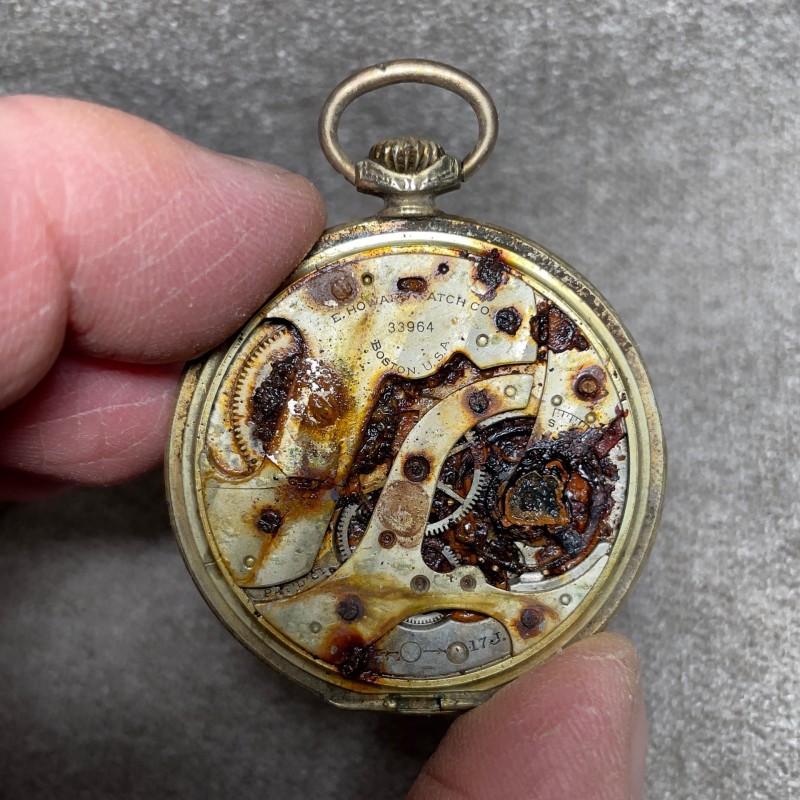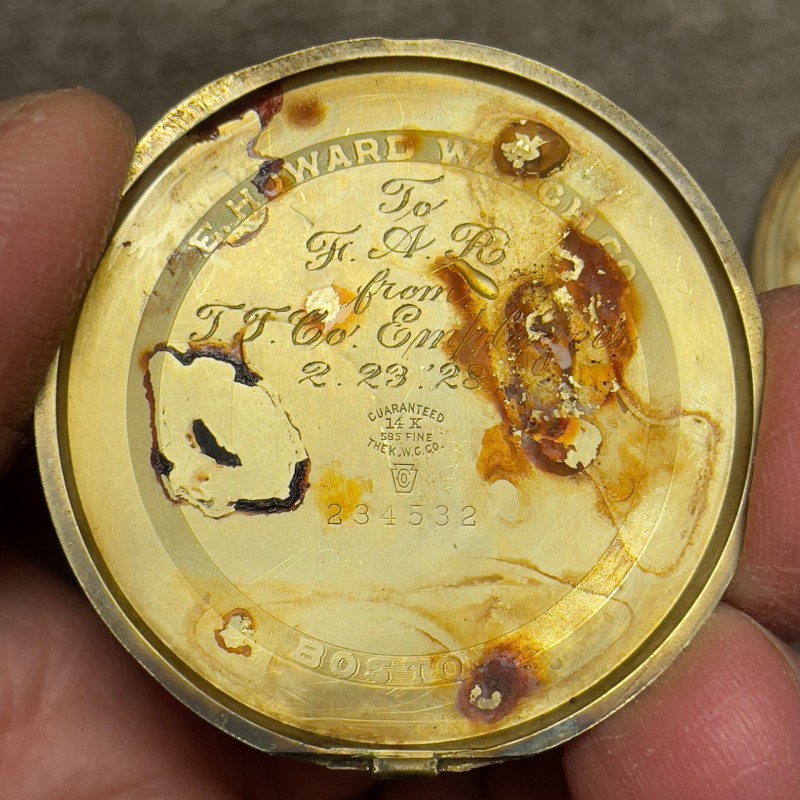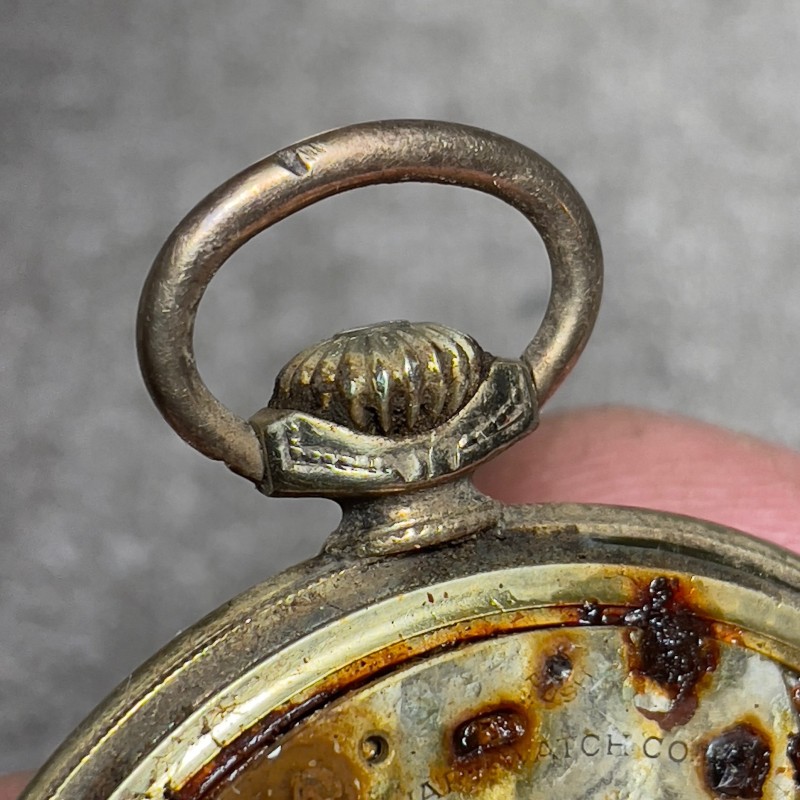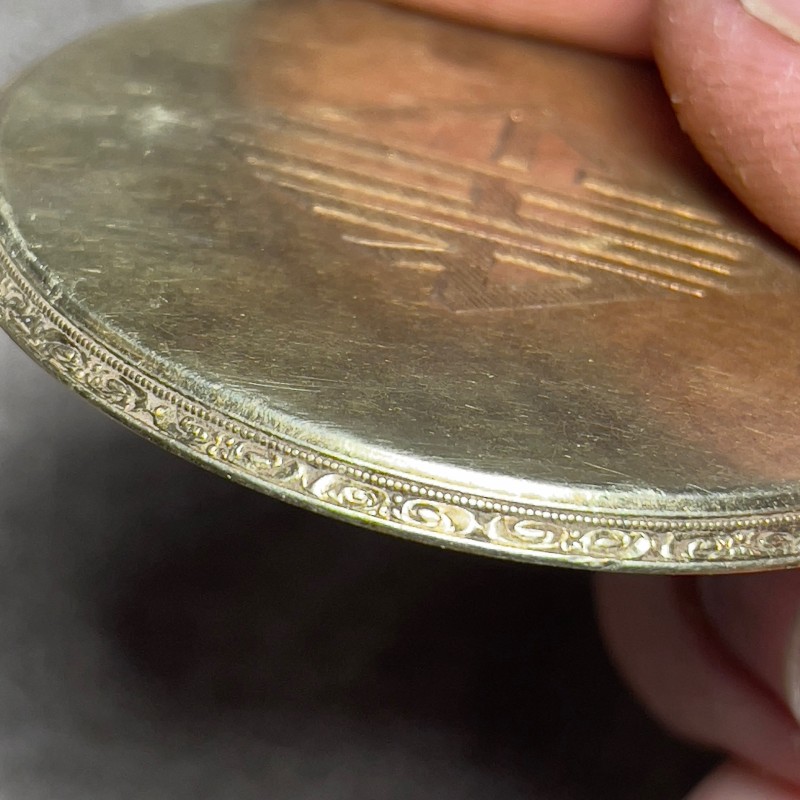
SwiftSword
Full Member-
Posts
146 -
Joined
-
Last visited
-
Days Won
1
Content Type
Forums
Detector Prospector Home
Detector Database
Downloads
Everything posted by SwiftSword
-
A Bit Unexpected In Greater Boston
SwiftSword replied to SwiftSword's topic in Metal Detecting For Coins & Relics
Deus II, 11x13 coil, sens FT program. Numbers were bouncing all over, sounded not unlike a soda can, only louder. It was only about an inch underground. -
WWI Model 1905 bayonet, found in the woods. I'm sure the drop involved a conversation along the lines of "Dad, I lost your special knife". Plus bonus silvers! and a mystery item. I believe it's the point from a cane or walking stick.
- 9 replies
-
- 25
-

-
I confess I know nothing about prospecting, but that doesn't seem to be a lot of gold for a whole summer's worth of detecting. Is this par for the course, or do you need better them thar hills?
-
Metal Detector Finds Worth Looking At Again
SwiftSword replied to mn90403's topic in Detector Prospector Forum
"The discovery of the Derrynaflan Chalice and other treasures in the “Derrynaflan Hoard,” as it’s known, led to sweeping changes in Ireland’s antiquities laws. It is now illegal to search for antiquities in Ireland with metal detectors, and any archeological artifacts unearthed by the public are automatically the property of the state." No good deed goes unpunished. -
Conserving Detected Dug Coins & Relics
SwiftSword replied to Cal_Cobra's topic in Metal Detecting For Coins & Relics
On old copper I prefer a mechanical approach. I let them dry slowly to prevent the top layers from separating, and the I prep them the same way I prep fossils: with tiny tungsten needles and scrapers, under a microscope. It's very laborious, but I don't find that much old copper and I like doing it. The results speak gor themselves, I think. -
Looks more like campfire aluminum from here, but only a test can tell. I hear if you spit on a piece of aluminum foil and the rub it on the metal, silver will make it smell like rotten eggs.
-
How I Ruined My First "historical" Find
SwiftSword replied to SwiftSword's topic in Metal Detecting For Coins & Relics
On the subject of copper cleaning, I'd like to offer my method: This one came from a farmyard in eastern Massachusetts and was completely crusted over. It had good details though. They are preserved entirely in verdigris (the green corrosion that forms on bronze and copper). I scraped the encrustation only from the high areas and left the dirt in the fields. To do this, I used a stereo microscope and tiny scrapers (think dental tools) that I use for prepping fossils. Lastly I polished the high areas a little with a fiberglass brush, and applied a little penetrating oil-based finish. Total time spent so far is about four hours, and I haven't done the reverse yet -
At this point I am about 20 hours in on the 11 x 13 coil. Here are some first impressions: Pros: * Coverage is enormous compared to the 9" coil. It doesn't detect just under the coil, there seems to be a significant halo around it as well. It gets my shovel every swing unless I drag it behind me. I found two silvers that rang from outside the area covered by the coil (and, to be fair, many beer cans) * Whatever problems existed with drooping appear to have been addressed, or are yet to appear. No noticeable drooping. * There seems to be a significant depth advantage over the 9" coil. I haven't verified this yet on an actual deep target, but air tests seem to indicate it. * Doesn't seem to be a lot more affected by EMI than the 9" coil. Cons (none unexpected): * Compared to the 9", it weighs a ton. Swinging it for a couple of hours is a workout. * it's not great in dense undergrowth. Overall impression: I love it and think it's definitely worth it if you have the 9" coil.
-
Minelab puts out unbaked software...everybody complains. XP takes their time to do it right...everybody complains. As a software engineer, I'd rather they get it right than rush it to please the squeaky wheels. It gets here when it gets here.
- 93 replies
-
- 10
-

-

-
Two years ago, I found what I thought was my first musket ball on property near the road along which the Minutemen of my town march to join the Battle of Lexington and Concord. I was absolutely ecstatic. This was my first properly old find, History with a capital H, history I could touch! I imagined the last person to have handled this ball before me: knee breeches, buckled shoes – a tricorn hat, for sure! It didn't bother me that the ball was much too small for an 18th century musket (maybe it was made for a pistol), nor that balls like this had been in use for a hundred years before and after that fateful April morning in 1775. For the last two years, this ball had pride of place in my collection. But recently I returned to the spot, now a much more seasoned detectorist with better equipment and a more critical mindset. I found three more balls right away. I returned the next day and found five more, all very shallow finds, almost at the surface. A few inches beneath the balls, I found a toy car made in 1955. This was puzzling. None of the balls had been shot from a gun, though some were clearly damaged by hitting something. Most didn't have the thick, white-brown patina that lead acquires after centuries in the ground. They were all grouped fairly close together on a steep slope, behind a subdivision built in the early sixties. The toy car was buried deeper in undisturbed ground, and therefore predated any of them. Then it dawned on me. These weren't musket balls at all. They were projectiles for a slingshot! Most likely from the sixties or seventies, a time when it was perfectly acceptable for kids to shoot their eyes out with weapons that flung toxic lead balls! I knew this because I had been a 70s kid, and ten-year old me had coveted a slingshot just like this. So here, some kid had set up a plinking range and was flinging lead balls at cans, perhaps, with many balls burying themselves in the slope behind the target. Ugh, what a disappointment at first! But in the end, I was mostly happy that I figured out the puzzle. In fact, I think it makes a better story. One that illustrates why archeology is all about context, and how objects without context are almost always meaningless – something all metal detectorists should keep in mind! Of course it helps that I've found some real musket balls in the meantime, though not at the Battle Road. They are the larger balls at the top of the picture. These unfired balls were almost certainly dropped by hunters. But who knows – perhaps some of those hunters were also Minutemen?
- 12 replies
-
- 18
-

-

-
It came! And I have a brand new permission to try it out on tomorrow. It's a wide open back yard, so this should work well. I'll bring the 9" along, too, just in case. One thing I noticed today when I just swung it around the backyard is that both size and weight are far greater than I had expected. Compared to the 9", it's almost comically large. But I expect the feeling of wearing clown shoes will dissipate with the first good find 😄
-
Well, I pulled the trigger. It'll be here on Saturday. I have the 9" coil right now but want to branch out into fields and pastures this spring. The extras coverage and thst little bit of extra depth will hopefully lead to good things.
-
Incidentally, that's similar to "World Series" and "World-Famous Roast Beef" in that, despite the claim, class rings are a purely American thing that the rest of the world is mostly unaware of. I remember marveling at the absolute clonkers worn by high school exchange students when I still lived in Germany. Congrats on the find and on the successful return!
-
Indeed! But unlike the movement serials, which were published liberally to assist watchmakers with repairs, the case serials were purely internal, and very few records survive.
- 16 replies
-
- xp deus 2
- gold found
-
(and 1 more)
Tagged with:
-
I'm trying! The last initial, R, matches with the family that would have lived there at the time. However, I can't find any member of the family who would have been an adult in 1928 with the first names F. A. It may have been a member of the extended family that I'm yet to discover. Or I'm barking up the wrong tree entirely: The farm was used for an unrelated business with lots of traffic starting in the 1950s. So it could have belonged to a customer. There are no less than seven service marks in the lid, one of them in form of a date: 7/14/40. Whoever F. A. R. was, they wore and cared for this watch for decades. I have thought of restoring the watch, but that would entail significant expense, so I think I'll just clean it up as best I can and preserve it.
- 16 replies
-
- 4
-

-
- xp deus 2
- gold found
-
(and 1 more)
Tagged with:
-
It was about four feet from a barn, so it was spared the plow!
- 16 replies
-
- 2
-

-
- xp deus 2
- gold found
-
(and 1 more)
Tagged with:
-
No, the watch only has a front bezel, which is missing. The state of the dial and the presence of a lot of crud in the channel where the bezel sits makes me think it wasn't present. But of course I'll go back there and search for it!
- 16 replies
-
- 1
-

-
- xp deus 2
- gold found
-
(and 1 more)
Tagged with:
-
I rarely find anything worth posting here, but I think you might enjoy this. I have a standing permission at an old farm yard here in eastern Massachusetts. I've been over this particular spot six or eight times, and found a Barber dime just before the end of last season. So that's where I started last night. Deus II, Sens FT, square tones. Settings probably wouldn't have mattered as this signal was pretty clear – low eighties, fairly clear tone with a slight scratch on the outswing, and a bit of an unctuous warble. So a bottle cap, or more likely a big screw top from a liquor bottle. I dug it anyway because I wanted to clear the trash out and hopefully find more coins. It was very dark already, so when I flipped the sod, I could barely tell that I had a pocket watch or compass, so on I went. once I cleaned it off a bit at home, I explained to my son that this wasn't plated because there were no flakes coming off, but that silver sometimes comes out gold toned. At that point the back falls off. I got so excited about the inscription that I didn't read the case marks. So it took quite a while for me to realize that this was, in fact, a 14k gold watch!
- 16 replies
-
- 30
-

-

-

-
- xp deus 2
- gold found
-
(and 1 more)
Tagged with:
-
Bushing For Carbon Fiber Lower Shaft On Deus II
SwiftSword replied to Jed in NC's topic in XP Deus II Forum
Thanks! Well, I'm going to order one right now! -
Bushing For Carbon Fiber Lower Shaft On Deus II
SwiftSword replied to Jed in NC's topic in XP Deus II Forum
How does it fit at the top end? Does it have the same cross section as the OEM shaft, or did you have to modify anything there? -
I previously asked about the 13" and was dissuaded from buying one. I'd still like another coil option apart from the 9", but I think I'd prefer a 6", as it gets very trashy around here. On occasion I'd love to cover more ground quickly, but I'm not sure it's worth the investment.
-
All, I'm looking for some insight on my experience. This is totally anecdotal, I have done no scientific testing. I find that my Deus II is getting great depth in open spaces, where there are no obvious sources of EMI, or only a single source (like an overland transmission line). As soon as I get into suburban backyards, my depth in any mode is greatly reduced. Yesterday, I detected across the street from a fire station (with a big radio tower on the roof) and found the Deus could barely see a penny lying on the ground. Even in single frequency mode I can't ever find a quiet one. It seems to me that communication equipment (radio / cell / wifi) specifically causes these problems. My understanding is that all these things transmit on a wide variety of frequencies. I know there are some folks here with an engineering background – do you see a possibility that manufacturers will overcome this problem in the near term, or are we screwed until the next technological revolution in MD?
-
Why Does Deep Hc Cause So Much Battery Drain?
SwiftSword replied to CPT_GhostLight's topic in XP Deus II Forum
On a side note, I recently started favoring the Sensitive FT program. At least in my soil/find conditions, I don't appear to be losing any depth over Deep HC, and it seems to discriminate better than Deep HC (at least I feel I dig less trash). I can go out for a max of ~2hrs at a time, so battery life isn't that critical to me. That's purely anecdotal and non-scientific, of course. -
Why Does Deep Hc Cause So Much Battery Drain?
SwiftSword replied to CPT_GhostLight's topic in XP Deus II Forum
That should just affect the battery life of the remote, though, no? The remote lasts forever for me, it's the coil and headphones that run out for me.

